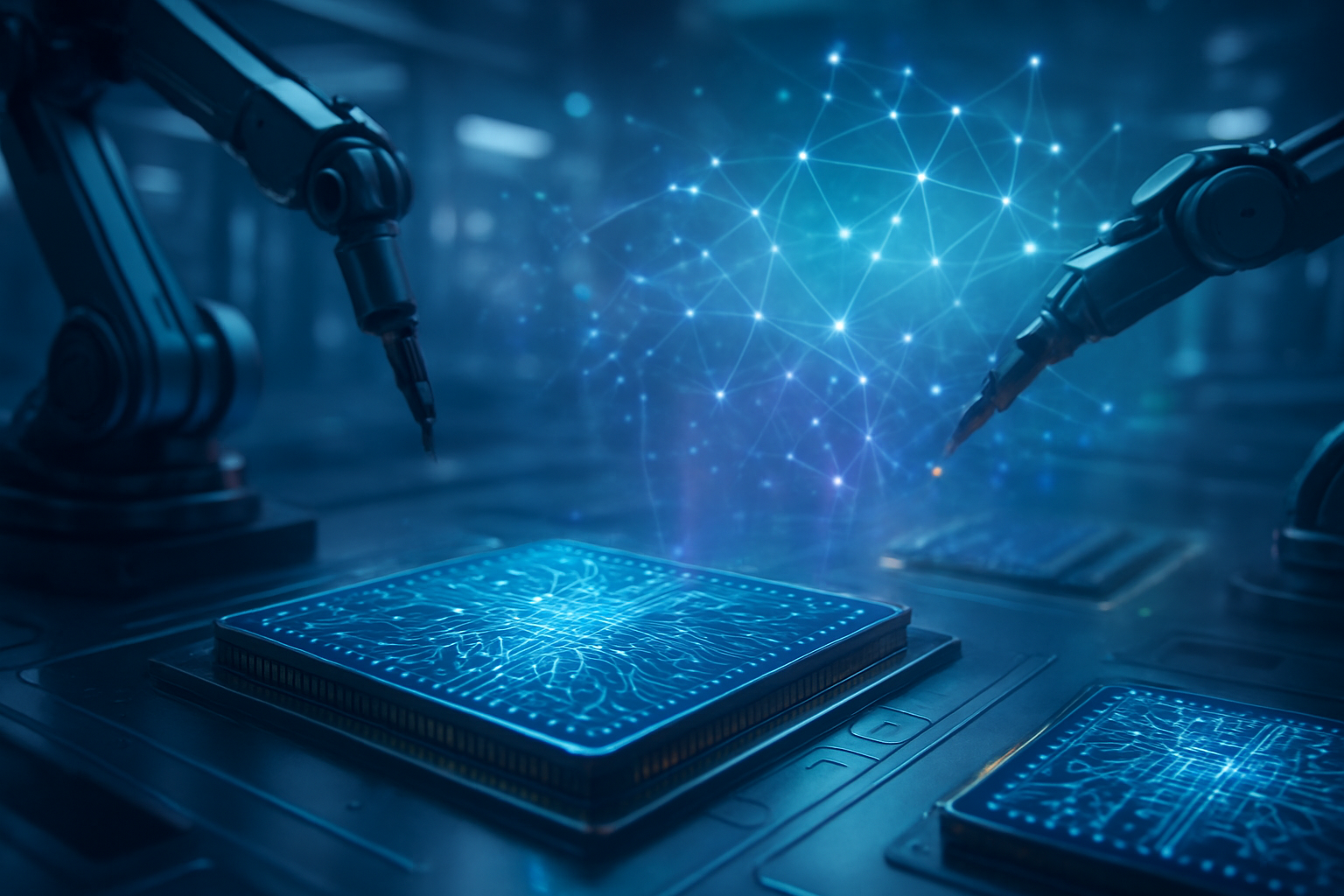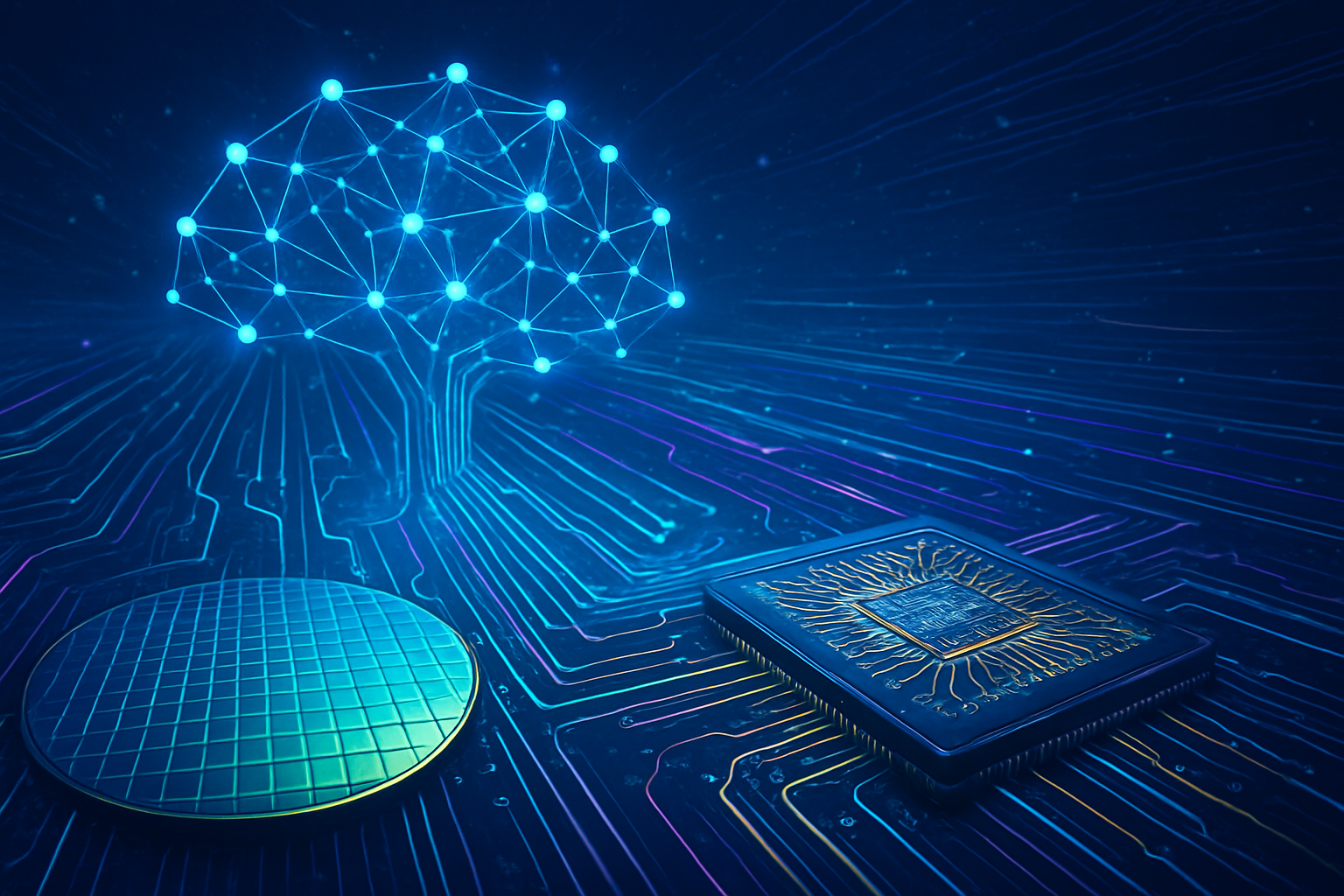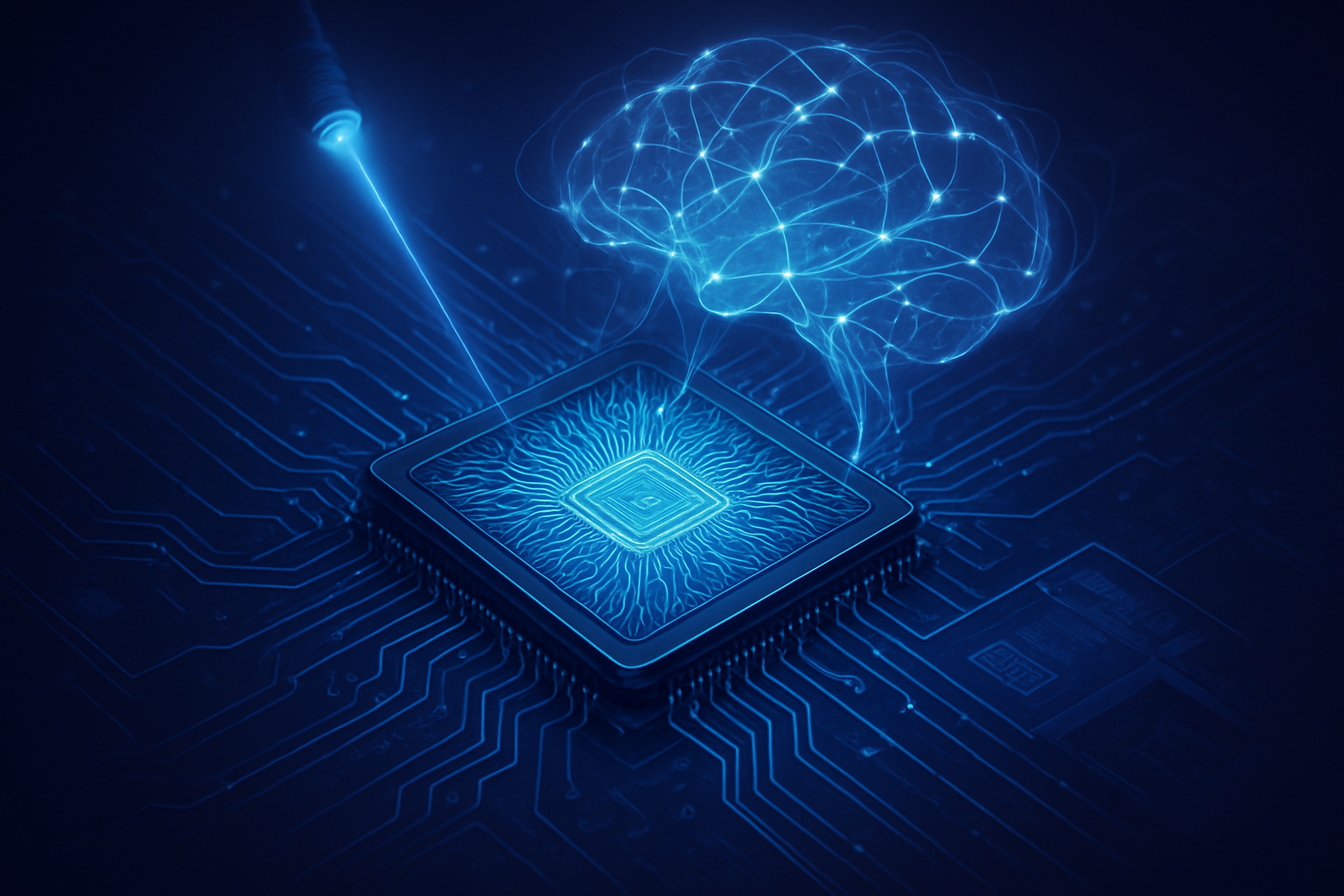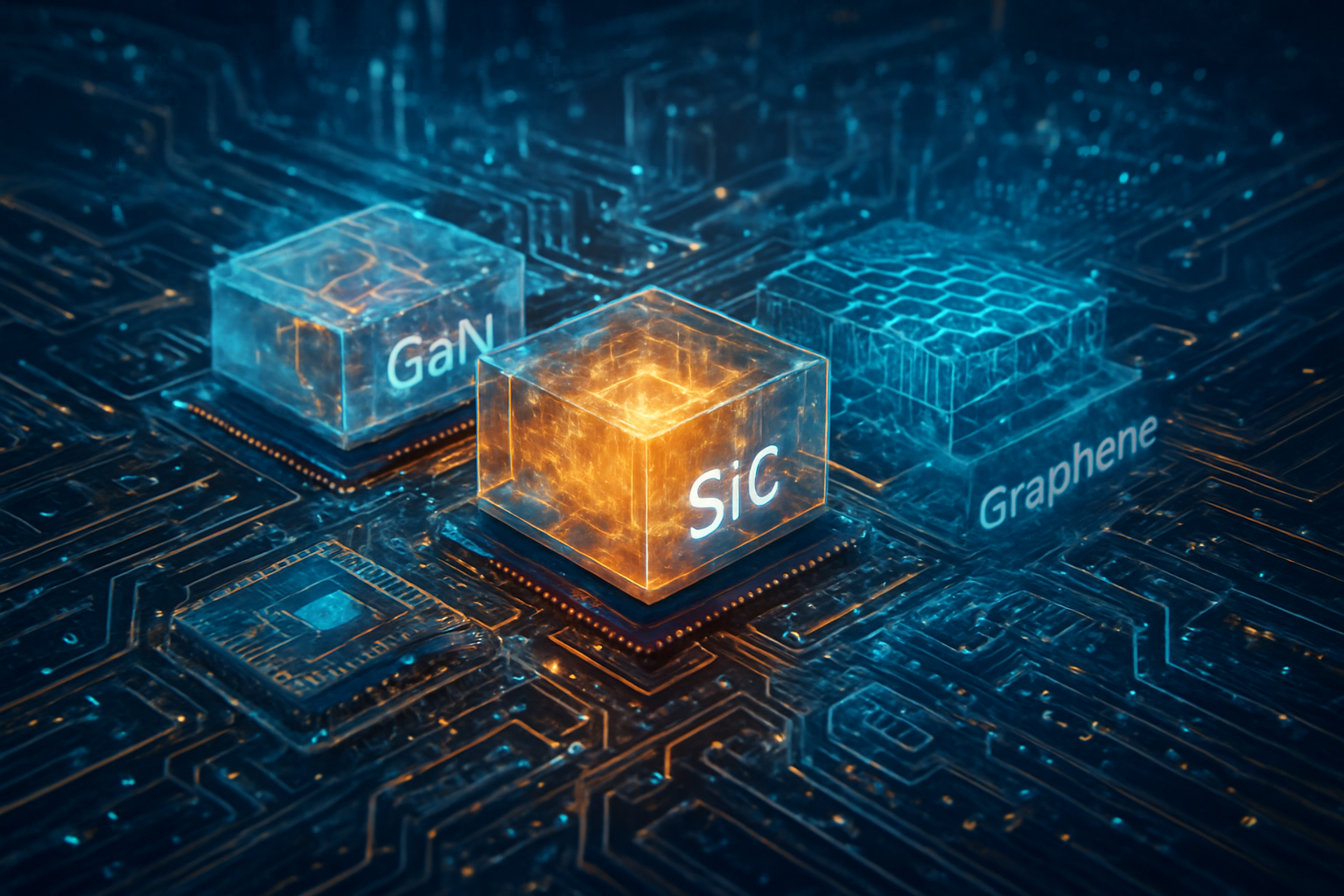The semiconductor industry is currently navigating an unprecedented era of innovation, fundamentally reshaping the landscape of computing and intelligence. As of late 2025, a confluence of groundbreaking advancements in manufacturing processes and novel materials is not merely extending the trajectory of Moore's Law but is actively redefining its very essence. These breakthroughs are critical in meeting the insatiable demands of Artificial Intelligence (AI), high-performance computing (HPC), 5G infrastructure, and the burgeoning autonomous vehicle sector, promising chips that are not only more powerful but also significantly more energy-efficient.
At the forefront of this revolution are sophisticated packaging technologies that enable 2.5D and 3D chip integration, the widespread adoption of Gate-All-Around (GAA) transistors, and the deployment of High-Numerical Aperture (High-NA) Extreme Ultraviolet (EUV) lithography. Complementing these process innovations are new classes of ultra-high-purity and wide-bandgap materials, alongside the exploration of 2D materials, all converging to unlock unprecedented levels of performance and miniaturization. The immediate significance of these developments in late 2025 is profound, laying the indispensable foundation for the next generation of AI systems and cementing semiconductors as the pivotal engine of the 21st-century digital economy.
Pushing the Boundaries: Technical Deep Dive into Next-Gen Chip Manufacturing
The current wave of semiconductor innovation is characterized by a multi-pronged approach to overcome the physical limitations of traditional silicon scaling. Central to this transformation are several key technical advancements that represent a significant departure from previous methodologies.
Advanced Packaging Technologies have evolved dramatically, moving beyond conventional 1D PCB designs to sophisticated 2.5D and 3D hybrid bonding at the wafer level. This allows for interconnect pitches in the single-digit micrometer range and bandwidths reaching up to 1000 GB/s, alongside remarkable energy efficiency. 2.5D packaging positions components side-by-side on an interposer, while 3D packaging stacks active dies vertically, both crucial for HPC systems by enabling more transistors, memory, and interconnections within a single package. This heterogeneous integration and chiplet architecture approach, combining diverse components like CPUs, GPUs, memory, and I/O dies, is gaining significant traction for its modularity and efficiency. High-Bandwidth Memory (HBM) is a prime beneficiary, with companies like Samsung (KRX: 005930), SK Hynix (KRX: 000660), and Micron Technology (NASDAQ: MU) exploring new methods to boost HBM performance. TSMC (NYSE: TSM) leads in 2.5D silicon interposers with its CoWoS-L technology, notably utilized by NVIDIA's (NASDAQ: NVDA) Blackwell AI chip. Broadcom (NASDAQ: AVGO) also introduced its 3.5D XDSiP semiconductor technology in December 2024 for GenAI infrastructure, further highlighting the industry's shift.
Gate-All-Around (GAA) Transistors are rapidly replacing FinFET technology for advanced process nodes due to their superior electrostatic control over the channel, which significantly reduces leakage currents and enhances energy efficiency. Samsung has already commercialized its second-generation 3nm GAA (MBCFET™) technology in 2025, demonstrating early adoption. TSMC is integrating its GAA-based Nanosheet technology into its upcoming 2nm node, poised to revolutionize chip performance, while Intel (NASDAQ: INTC) is incorporating GAA designs into its 18A node, with production expected in the second half of 2025. This transition is critical for scalability below 3nm, enabling higher transistor density for next-generation chipsets across AI, 5G, and automotive sectors.
High-NA EUV Lithography, a pivotal technology for advancing Moore's Law to the 2nm technology generation and beyond, including 1.4nm and sub-1nm processes, is seeing its first series production slated for 2025. Developed by ASML (NASDAQ: ASML) in partnership with ZEISS, these systems feature a Numerical Aperture (NA) of 0.55, a substantial increase from current 0.33 NA systems. This enables even finer resolution and smaller feature sizes, leading to more powerful, energy-efficient, and cost-effective chips. Intel has already produced 30,000 wafers using High-NA EUV, underscoring its strategic importance for future nodes like 14A. Furthermore, Backside Power Delivery, incorporated by Intel into its 18A node, revolutionizes semiconductor design by decoupling the power delivery network from the signal network, reducing heat and improving performance.
Beyond processes, Innovations in Materials are equally transformative. The demand for ultra-high-purity materials, especially for AI accelerators and quantum computers, is driving the adoption of new EUV photoresists. For sub-2nm nodes, new materials are essential, including High-K Metal Gate (HKMG) dielectrics for advanced transistor performance, and exploratory materials like Carbon Nanotube Transistors and Graphene-Based Interconnects to surpass silicon's limitations. Wide-Bandgap Materials such as Silicon Carbide (SiC) and Gallium Nitride (GaN) are crucial for high-efficiency power converters in electric vehicles, renewable energy, and data centers, offering superior thermal conductivity, breakdown voltage, and switching speeds. Finally, 2D Materials like Molybdenum Disulfide (MoS2) and Indium Selenide (InSe) show immense promise for ultra-thin, high-mobility transistors, potentially pushing past silicon's theoretical limits for future low-power AI at the edge, with recent advancements in wafer-scale fabrication of InSe marking a significant step towards a post-silicon future.
Competitive Battleground: Reshaping the AI and Tech Landscape
These profound innovations in semiconductor manufacturing are creating a fierce competitive landscape, significantly impacting established AI companies, tech giants, and ambitious startups alike. The ability to leverage or contribute to these advancements is becoming a critical differentiator, determining market positioning and strategic advantages for the foreseeable future.
Companies at the forefront of chip design and manufacturing stand to benefit immensely. TSMC (NYSE: TSM), with its leadership in advanced packaging (CoWoS-L) and upcoming GAA-based 2nm node, continues to solidify its position as the premier foundry for cutting-edge AI chips. Its capabilities are indispensable for AI powerhouses like NVIDIA (NASDAQ: NVDA), whose latest Blackwell AI chips rely heavily on TSMC's advanced packaging. Similarly, Samsung (KRX: 005930) is a key player, having commercialized its 3nm GAA technology and actively competing in the advanced packaging and HBM space, directly challenging TSMC for next-generation AI and HPC contracts. Intel (NASDAQ: INTC), through its aggressive roadmap for its 18A node incorporating GAA and backside power delivery, and its significant investment in High-NA EUV, is making a strong comeback attempt in the foundry market, aiming to serve both internal product lines and external customers.
The competitive implications for major AI labs and tech companies are substantial. Those with the resources and foresight to secure access to these advanced manufacturing capabilities will gain a significant edge in developing more powerful, efficient, and smaller AI accelerators. This could lead to a widening gap between companies that can afford and utilize these cutting-edge processes and those that cannot. For instance, companies like Google (NASDAQ: GOOGL), Microsoft (NASDAQ: MSFT), and Amazon (NASDAQ: AMZN) that design their own custom AI chips (like Google's TPUs) will be heavily reliant on these foundries to bring their designs to fruition. The shift towards heterogeneous integration and chiplet architectures also means that companies can mix and match components from various suppliers, fostering a new ecosystem of specialized chiplet providers, potentially disrupting traditional monolithic chip design.
Furthermore, the rise of advanced packaging and new materials could disrupt existing products and services. For example, the enhanced power efficiency and performance enabled by GAA transistors and advanced packaging could lead to a new generation of mobile devices, edge AI hardware, and data center solutions that significantly outperform current offerings. This forces companies across the tech spectrum to re-evaluate their product roadmaps and embrace these new technologies to remain competitive. Market positioning will increasingly be defined not just by innovative chip design, but also by the ability to manufacture these designs at scale using the most advanced processes. Strategic advantages will accrue to those who can master the complexities of these new manufacturing paradigms, driving innovation and efficiency across the entire technology stack.
A New Horizon: Wider Significance and Broader Trends
The innovations sweeping through semiconductor manufacturing are not isolated technical achievements; they represent a fundamental shift in the broader AI landscape and global technological trends. These advancements are critical enablers, underpinning the rapid evolution of artificial intelligence and extending its reach into virtually every facet of modern life.
These breakthroughs fit squarely into the overarching trend of AI democratization and acceleration. By enabling the production of more powerful, energy-efficient, and compact chips, they make advanced AI capabilities accessible to a wider range of applications, from sophisticated data center AI training to lightweight edge AI inference on everyday devices. The ability to pack more computational power into smaller footprints with less energy consumption directly fuels the development of larger and more complex AI models, like large language models (LLMs) and multimodal AI, which require immense processing capabilities. This sustained progress in hardware is essential for AI to continue its exponential growth trajectory.
The impacts are far-reaching. In data centers, these chips will drive unprecedented levels of performance for AI training and inference, leading to faster model development and deployment. For autonomous vehicles, the combination of high-performance, low-power processing and robust packaging will enable real-time decision-making with enhanced reliability and safety. In 5G and beyond, these semiconductors will power more efficient base stations and advanced mobile devices, facilitating faster communication and new applications. There are also potential concerns; the increasing complexity and cost of these advanced manufacturing processes could further concentrate power among a few dominant players, potentially creating barriers to entry for smaller innovators. Moreover, the global competition for semiconductor manufacturing capabilities, highlighted by geopolitical tensions, underscores the strategic importance of these innovations for national security and economic resilience.
Comparing this to previous AI milestones, the current era of semiconductor innovation is akin to the invention of the transistor itself or the shift from vacuum tubes to integrated circuits. While past milestones focused on foundational computational elements, today's advancements are about optimizing and integrating these elements at an atomic scale, coupled with architectural innovations like chiplets. This is not just an incremental improvement; it's a systemic overhaul that allows AI to move beyond theoretical limits into practical, ubiquitous applications. The synergy between advanced manufacturing and AI development creates a virtuous cycle: AI drives the demand for better chips, and better chips enable more sophisticated AI, pushing the boundaries of what's possible in fields like drug discovery, climate modeling, and personalized medicine.
The Road Ahead: Future Developments and Expert Predictions
The current wave of innovation in semiconductor manufacturing is far from its crest, with a clear roadmap for near-term and long-term developments that promise to further revolutionize the industry and its impact on AI. Experts predict a continued acceleration in the pace of change, driven by ongoing research and significant investment.
In the near term, we can expect the full-scale deployment and optimization of High-NA EUV lithography, leading to the commercialization of 2nm and even 1.4nm process nodes by leading foundries. This will enable even denser and more power-efficient chips. The refinement of GAA transistor architectures will continue, with subsequent generations offering improved performance and scalability. Furthermore, advanced packaging technologies will become even more sophisticated, moving towards more complex 3D stacking with finer interconnect pitches and potentially integrating new cooling solutions directly into the package. The market for chiplets will mature, fostering a vibrant ecosystem where specialized components from different vendors can be seamlessly integrated, leading to highly customized and optimized processors for specific AI workloads.
Looking further ahead, the exploration of entirely new materials will intensify. 2D materials like MoS2 and InSe are expected to move from research labs into pilot production for specialized applications, potentially leading to ultra-thin, low-power transistors that could surpass silicon's theoretical limits. Research into neuromorphic computing architectures integrated directly into these advanced processes will also gain traction, aiming to mimic the human brain's efficiency for AI tasks. Quantum computing hardware, while still nascent, will also benefit from advancements in ultra-high-purity materials and precision manufacturing techniques, paving the way for more stable and scalable quantum bits.
Challenges remain, primarily in managing the escalating costs of R&D and manufacturing, the complexity of integrating diverse technologies, and ensuring a robust global supply chain. The sheer capital expenditure required for each new generation of lithography equipment and fabrication plants is astronomical, necessitating significant government support and industry collaboration. Experts predict that the focus will increasingly shift from simply shrinking transistors to architectural innovation and materials science, with packaging playing an equally, if not more, critical role than transistor scaling. The next decade will likely see the blurring of lines between chip design, materials engineering, and system-level integration, with a strong emphasis on sustainability and energy efficiency across the entire manufacturing lifecycle.
Charting the Course: A Transformative Era for AI and Beyond
The current period of innovation in semiconductor manufacturing processes and materials marks a truly transformative era, one that is not merely incremental but foundational in its impact on artificial intelligence and the broader technological landscape. The confluence of advanced packaging, Gate-All-Around transistors, High-NA EUV lithography, and novel materials represents a concerted effort to push beyond traditional scaling limits and unlock unprecedented computational capabilities.
The key takeaways from this revolution are clear: the semiconductor industry is successfully navigating the challenges of Moore's Law, not by simply shrinking transistors, but by innovating across the entire manufacturing stack. This holistic approach is delivering chips that are faster, more powerful, more energy-efficient, and capable of handling the ever-increasing complexity of modern AI models and high-performance computing applications. The shift towards heterogeneous integration and chiplet architectures signifies a new paradigm in chip design, where collaboration and specialization will drive future performance gains.
This development's significance in AI history cannot be overstated. Just as the invention of the transistor enabled the first computers, and the integrated circuit made personal computing possible, these current advancements are enabling the widespread deployment of sophisticated AI, from intelligent edge devices to hyper-scale data centers. They are the invisible engines powering the current AI boom, making innovations in machine learning algorithms and software truly impactful in the physical world.
In the coming weeks and months, the industry will be watching closely for the initial performance benchmarks of chips produced with High-NA EUV and the widespread adoption rates of GAA transistors. Further announcements from major foundries regarding their 2nm and sub-2nm roadmaps, as well as new breakthroughs in 2D materials and advanced packaging, will continue to shape the narrative. The relentless pursuit of innovation in semiconductor manufacturing ensures that the foundation for the next generation of AI, autonomous systems, and connected technologies remains robust, promising a future of accelerating technological progress.
This content is intended for informational purposes only and represents analysis of current AI developments.
TokenRing AI delivers enterprise-grade solutions for multi-agent AI workflow orchestration, AI-powered development tools, and seamless remote collaboration platforms.
For more information, visit https://www.tokenring.ai/.









